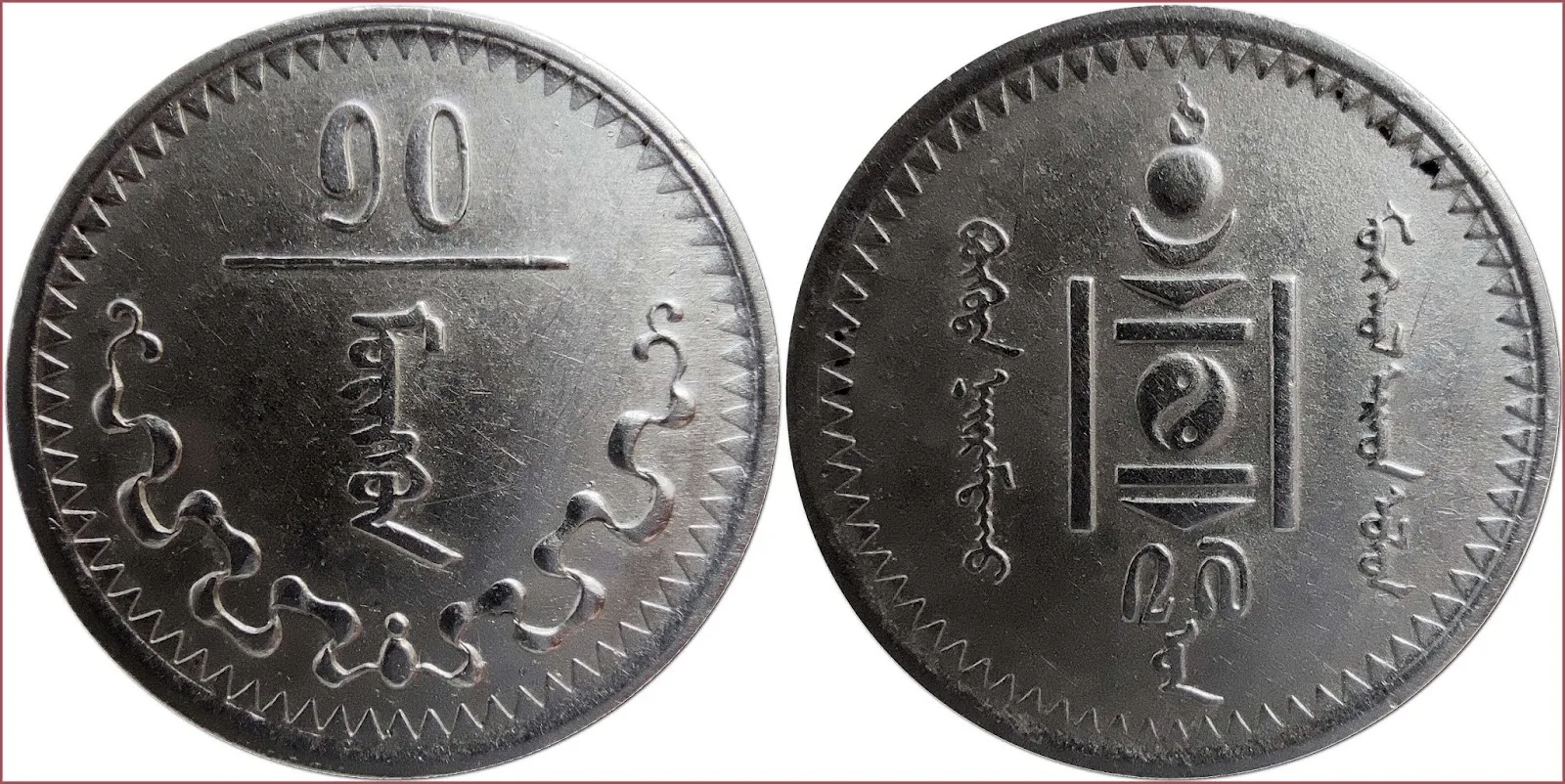MÖNGÖ: COIN OF MONGOLIA
10 möngö (ᠮᠥᠩᠭᠥᠨ or мөнгө), 1937: Mongolian People's Republic
Date on coin: ᠒᠗ (27: 27th year from Independence) = 1937 (Gregorian calendar).
In 1911, there was a revolution in Outer Mongolia (a territory of the Chinese Qing dynasty from 1691 to 1911), overthrowing the protectorate of China. The result was the formation of an independent Mongolian state. Until 1945, the dates on all coins of Mongolia were counted precisely from 1911.
On the first Mongolian coins — 1925 and 1937 — all inscriptions (legends) are made in Mongolian script (it is traditionally written in vertical lines; text direction — Top-Down).
᠑᠐ ᠮᠥᠩᠭᠥᠨ: 10 möngö.
ᠪᠦᠭᠦᠳᠡ ᠨᠠᠶᠢᠷᠠᠮᠳᠠᠬᠤ ᠮᠣᠩᠭᠣᠯ ᠠᠷᠠᠳ ᠤᠯᠤᠰ: Mongolian People's Republic.
᠒᠗ ᠣᠨ: 27th year.
The Soyombo (State emblem of Mongolian People's Republic in 1911-1940): an ancient Indo-Buddhist symbol, considered a symbol of the Mongol people. It has ten elements in the columnar arrangement of abstract and geometric symbols and patterns: fire, sun, moon, two triangles, two horizontal rectangles, the Taijitu (yin and yang) and two vertical rectangles.
- Copper-nickel: 17 mm - 1.8 g
- Reference price: 5$
COIN MÖNGÖ — WHERE & WHEN (coins catalog: by names & emitents)
- MONGOLIAN PEOPLE'S REPUBLIC (1925-1981) + STATE OF MONGOLIA (1992-...): möngö = 1/100 tögrög
The name of the möngö coin translated from Mongolian means "silver". On the coins of 1925 and 1937, the denomination was indicated as "ᠮᠥᠩᠭᠥᠨ", while since 1945 — "mөngө". Interestingly, in English-language web sources, in addition to writing the name of the coin in the "möngö" format, there is also a variant of "mungu" (very rarely — "mongo").

